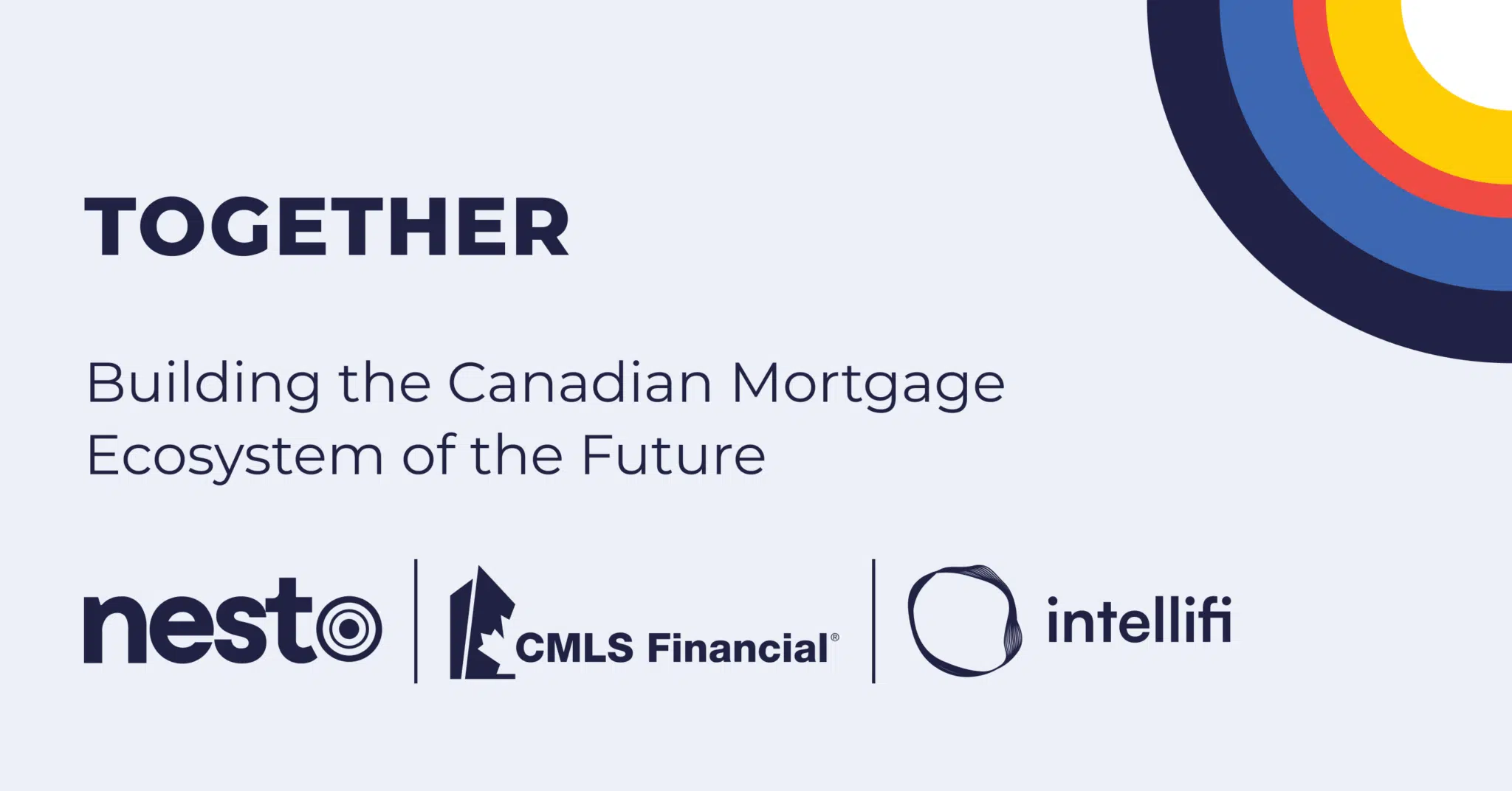Industry News #Featured articles
Industry News #Featured articles
Mortgage Rates Volatile on Trump Tariff Uncertainty

Table of contents
A Temporary Reprieve, But Uncertainty Lingers
President Donald Trump may have momentarily halted his planned 25% tariffs on Canadian and Mexican imports—but only for 30 days. While this avoids an immediate trade war, North American trade uncertainty keeps businesses, investors, financial institutions and central banks on edge.
This delay does little to restore confidence in an economic landscape that relies heavily on a rules-based trade order. Investors and industry leaders remain wary, as Trump’s willingness to use tariffs as a political bargaining tool signals prolonged instability to reduce the trade deficit between the US and Canada.
How US Growth Concerns Could Spill into Canada’s Housing Market
The implications of US trade policy extend well beyond direct tariffs—economic disruptions south of the border could have far-reaching consequences for Canadian mortgage rates.
- Inflation Pressures & Mortgage Costs: Tariffs, even their threats, tend to drive inflation higher. If the US sees price spikes from supply chain disruptions, the Fed and bond markets could keep policy and fixed interest rates elevated even longer, making borrowing more expensive on both sides of the border.
- Weakened Business Confidence: The Bank of Canada (BoC) has already lowered its policy rate to 3%, but the risk of a full-blown trade war could cause a growth slowdown in Canada and force deeper rate cuts.
- Loonie Under Pressure: A weaker Canadian dollar—expected as tariffs escalate—will increase the cost of imports, putting pressure on BoC policy decisions and mortgage affordability.
The Risks of a US Slowdown
Even if US tariffs are not enacted immediately, their looming threat acts as a drag on investment. Economists warn that Canada’s GDP growth could slow by four percentage points over the next two years, potentially pushing the economy into recession territory.
Key concerns include:
- Investor Hesitation: Uncertainty deters both foreign and domestic investment, which could limit job creation and economic growth.
- Manufacturing & Auto Sector Risks: Tariff uncertainty disrupts cross-border supply chains, particularly in the auto industry.
- Rising Consumer Costs: Canadian households are already facing affordability concerns. However, according to the Canadian Chamber of Commerce, new US tariffs could add an estimated $1,900 per year in extra costs for the average family.
The Direction of Mortgage Rates and Money Markets
Money markets are now fully pricing in a quarter-point Bank of Canada rate cut at its upcoming policy meeting on March 12th, with further reductions expected in the months ahead. The Canadian economy faces increasing pressure from the potential implementation of US tariffs, which could dampen growth and push the country into a mild recession later this year. In response, financial markets are anticipating a more aggressive monetary easing cycle. Some economists predict the central bank could cut rates below the current 3% level, with the possibility of an inter-meeting “emergency” cut if economic conditions worsen more rapidly than expected.
Bond markets already reflect these expectations with frequent updates to mortgage rate forecasts. The Canada two-year bond yield, highly sensitive to interest rate movements, has dropped to its lowest level since April 2022. This decline signals investors are bracing for a weaker Canadian economy and lower interest rates over the short term. In contrast, the US bond market remains relatively stable, highlighting Canada’s more significant economic risks. This divergence between Canadian and US yields has also put downward pressure on the Canadian dollar, adding further complexity to the Bank of Canada’s decision-making.
What’s Next for Mortgage Rates?
The BoC has more room to lower rates further if economic conditions deteriorate. However, if inflationary pressures reaccelerate due to higher import costs, policymakers may find themselves in a difficult position—between supporting growth and preventing rising prices.
While rate cuts are typically intended to support economic growth, they pose inflationary risks. Lower borrowing costs could lead to increased consumer spending and housing market activity, fueling inflation at a time when the central bank is still working to keep price pressures in check. Bank of Canada Governor Tiff Macklem has acknowledged the challenge of balancing these competing forces, stating that the central bank must carefully assess whether the downward pressure from weaker economic growth outweighs the upward pressure from inflation. For now, money markets expect 75 basis points of cuts this year, though BMO has suggested that the policy rate could drop to 1.50% by year-end if our closest trading partner imposes tariffs.
For mortgage borrowers, this means:
- Short-Term Rate Cuts Are Possible: If trade uncertainty slows growth, expect further cuts to the BoC’s policy rate, which could lower variable mortgage rates.
- Long-Term Inflation Risks Could Raise Rates: Lenders may reduce discounts on fixed mortgage rates to offset the risk if tariffs lead to higher inflation.
- A Strategic Approach is Key: Homeowners and prospective buyers should closely monitor BoC policy shifts, as mortgage affordability could rapidly change depending on the volatility of economic conditions.
We’re curious…
Canadians Must Prepare for Volatility
While Trump’s 30-day tariff delay provides a reprieve, North American trade is still on shaky ground. Whether through higher prices, investment slowdowns, or market uncertainty, the impact of US protectionism will continue to feed back into Canada’s mortgage market.
Falling bond yields have already led to the lowest 5-year fixed rates for mortgage borrowers in years, with nesto reducing rates by 20 basis points this week. If the Bank of Canada follows through with the anticipated rate cuts, further mortgage rate declines are likely, potentially bringing more lenders’ insured and uninsured mortgage rates below 4% in the coming weeks. However, the long-term path remains uncertain, as inflationary pressures or shifts in trade policy could impact the extent and duration of rate cuts.
For Canadian borrowers, now is the time to evaluate mortgage options carefully—whether that means locking in rates before potential hikes or staying flexible in case of further cuts as mortgage rate forecasts continue to change. As uncertainty looms, being proactive with mortgage planning is essential to find the most competitive rates and mortgage terms. Contact nesto mortgage experts to get customized guidance to tariff-proof your mortgage strategy.
Why Choose nesto
At nesto, our commission-free mortgage experts, certified in multiple provinces, provide exceptional advice and service that exceeds industry standards. Our mortgage experts are non-commissioned, salaried employees who provide impartial guidance on mortgage options tailored to your needs and are evaluated based on client satisfaction and advice quality. nesto aims to transform the mortgage industry by providing honest advice and competitive rates using a 100% fully digital, transparent, seamless process.
nesto is on a mission to offer a positive, empowering and transparent property financing experience – simplified from start to finish.
Contact our licensed and knowledgeable mortgage experts to find your best mortgage rate in Canada.
Ready to get started?
In just a few clicks, you can see our current rates. Then apply for your mortgage online in minutes!















